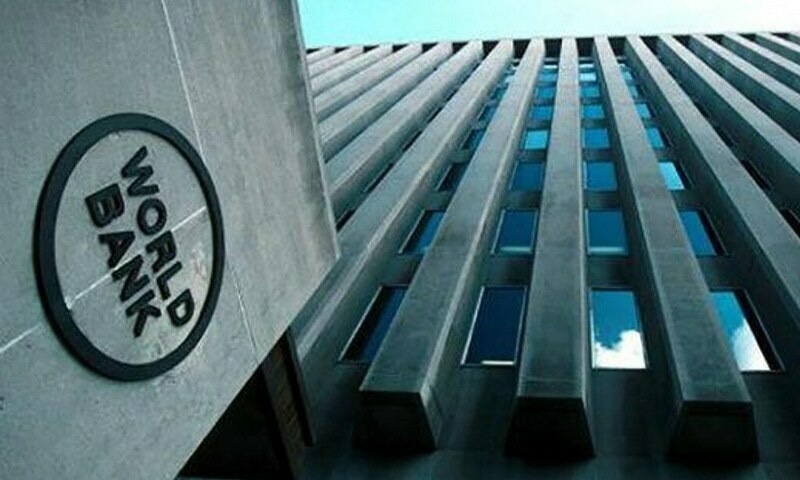Pakistan's GDP growth likely to slow to 4.3pc in FY22, 4pc in FY23: WB
Pakistan’s GDP growth is expected to slow to 4.3 percent in fiscal year 2021-22 and to four percent in fiscal year 2022-23, amid monetary tightening measures, high base effects from the previous year, and continued high inflation eroding real private consumption growth, says the World Bank.
The Bank in its latest report, “The South Asia Economic Focus, Reshaping Norms: A New Way Forward”, stated that the financing of the price cuts or subsidies on electricity and fuel can create an additional burden on the fiscal budget, threaten the ongoing programme with the International Monetary Fund (IMF), and limit the use of the fiscal budget on other, more productive projects.
The report also noted that while some countries experience a solid rebound in GDP growth, Afghanistan faces a humanitarian crisis, Pakistan a political crisis, and Sri Lanka a balance-of-payments crisis.
The report noted that Pakistan had earlier followed its agreement with the IMF to remove tax exemptions and increase the tax on fuels. But rising energy prices domestically and challenges from political opposition have forced the government to offer electricity and fuel price relief. Hans Timmer, World Bank chief economist for the South Asia Region briefing the media termed these subsidies as unsustainable.
Pakistan announced fuel and electricity price relief in February 2022. While these measures can help reduce fluctuations in domestic prices, they also constitute a direct burden or hidden liability on the government’s budget, which could increase fiscal vulnerabilities going forward. Price subsidies also tend to be larger on the consumer side than on the producer side, the report noted.
Energy subsidies as a percent of GDP are the highest in Pakistan, which means that the price increase in international markets potentially poses a tough fiscal challenge.
Inflation is expected to rise in all countries in 2022 and reach double digits in Pakistan and Sri Lanka before subsiding in 2023.
The report recommended that Pakistan, need to carefully watch their fiscal balance amid rising external debt vulnerabilities and domestic debt vulnerabilities.
Rising interest rates in advanced economies could lead to capital outflows, putting pressure on the currencies in countries grappling with high external indebtedness. This is of particular concern in countries with high levels of foreign currency-denominated debt, such as Sri Lanka, Pakistan, and Maldives. They are thus more exposed to swings in the risk appetite of foreign investors amid higher geopolitical uncertainty.
Indicators of ability to pay, such as the ratio of public external debt service to exports and remittances, is highest in Pakistan and Sri Lanka, it added.
Industrial production in Bangladesh and Pakistan is above pre-pandemic levels and has increased by more than the world average.
Pakistan experienced the mildest exports contraction in the region in 2020, and the recovery led by the textile sector was also the most rapid. Pakistani goods exports fell 54 percent year-over-year in April 2020 at the height of the pandemic. Since late 2020, the textile sector, which makes up more than 60 percent of total goods exports, has led the recovery.
Pakistan loosened Covid restrictions earlier than other Asian countries. This helped Pakistan divert orders from competitors and keep goods exports 40 percent above January 2019 levels.
The country faces the challenges of diversifying exports and boosting its low exports-to GDP ratio (currently around 10 percent), for example, through a tariff rationalization to encourage manufacturers to export and compete in global markets.
Driven by rising global energy prices since the second half of 2021, inflation rates in most energy-related goods (for example, fuel for utilities, transport) are much higher than the headline inflation in Bangladesh, India, Nepal, and Pakistan for the months from November 2021 to January 2022. In Bangladesh, India, Nepal, and Pakistan, inflation in edible oils reached over 20 percent in late 2021.
India has so far been able to purchase Ural oil at a discount from Russia, and Pakistan announced that it will continue importing wheat and natural gas from Russia. These arrangements may help reduce the impact of soaring global prices on domestic inflation
In March, which is the first whole month since the war started, inflation in Pakistan continues previous trends, with elevated inflation in edible oils and fuel-related categories, while inflation in wheat is subdued at 5 percent.
Vector Auto Regression (VAR) analysis, using data going back to 2000, shows that in response to a 10-percent increase in global oil prices, consumer price (CPI) inflation increases by 0.3-0.6 percentage point in Pakistan, Sri Lanka, and India.
In India, Pakistan, Sri Lanka, and Bangladesh, the prices of food and fuel for utilities correlate only weakly with global oil prices. Many factors contribute to this weak correlation, including subsidies or price caps on domestic fuel prices. The correlations with transportation are much stronger in most countries.
WPI inflation, which covers primary articles, manufactured products and fuel and power, has been elevated since early 2021 in India and Pakistan. Part of the higher inflation reflects base effects of relatively low input costs in 2021, as the two-year CAGR of WPI remains much lower. The WPI inflation has also been higher than CPI inflation for these countries since January 2021.
The gap between the two may capture a difference in the index composition. While CPI includes services items such as health care and education, WPI includes primary goods such as crude petroleum and manufactured products such as chemicals and mineral oils, which are not purchased directly by consumers. But even looking at items that are in both indexes, the WPI inflation is also higher than the CPI inflation.
In Nepal and Pakistan, private sector credit growth has picked up since early 2021 and has reached the 30 and 20 percent range, respectively, although growth is from a relatively low base in both countries. Fast credit growth signals ample demand for credit in the private sector and attests to the lending capability of the financial sector.
But the fast growth of credit could also lead to rapid deterioration of bank asset quality if lender screening is not adequate. In Pakistan, banks have focused on lending to the most creditworthy borrowers, with almost 70 percent of the loan book pivoted towards the corporate segment, but microfinance banks (MFBs) that lend to individuals and MSMEs have seen declines in asset quality.
In Pakistan, microfinance borrowers represented approximately 94 percent of the approved applications for the loan deferral and restructuring programs. Close to 50 percent of the net-loan portfolio of microfinance banks (MFBs) in the country participated in the programs. It is thus not surprising that gross NPLs of MFBs rose sharply by 4.3 billion rupee or 42.7 percent year-over-year in 2021Q2 when loan moratoriums expired.
This surge was partly driven by non-repayment of borrowers who took advantage of loan deferment or restructuring facilities a year earlier. Data on the Youth Entrepreneurship Scheme, which accounts for 23 percent of total loan disbursements by the microfinance sector, shows a sharp increase in both NPL amount and the number of NPL accounts since 2021Q2, consistent with the deterioration in asset quality post-support measures. But given the relatively small size of the microfinance sector in Pakistan, which takes up just 3.6 percent of total loans as of 2021Q4, any stress is likely going to be localized.
This story was first published in Business Recorder on April 14, 2022.
For the latest news, follow us on Twitter @Aaj_Urdu. We are also on Facebook, Instagram and YouTube.




















Comments are closed on this story.